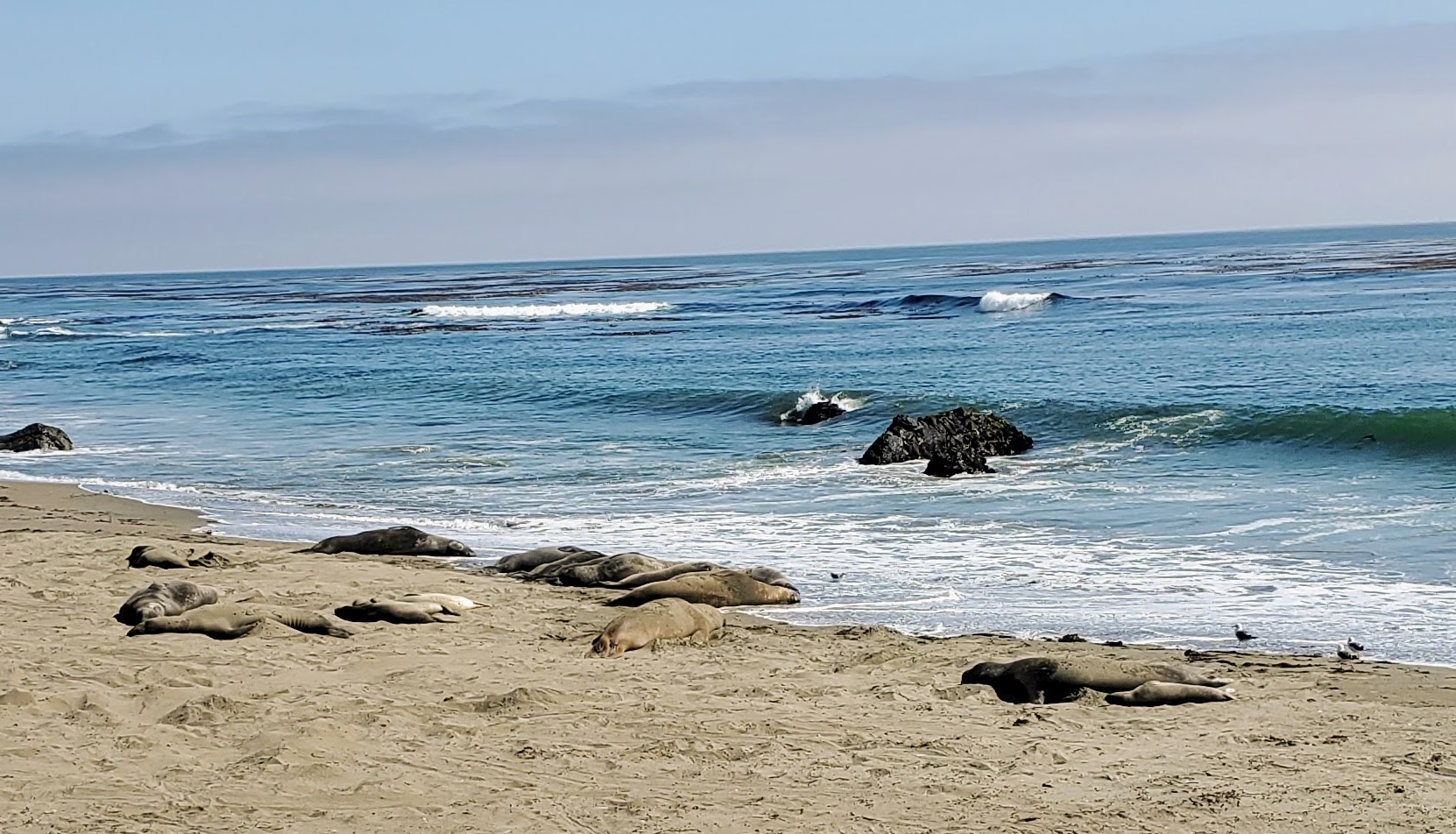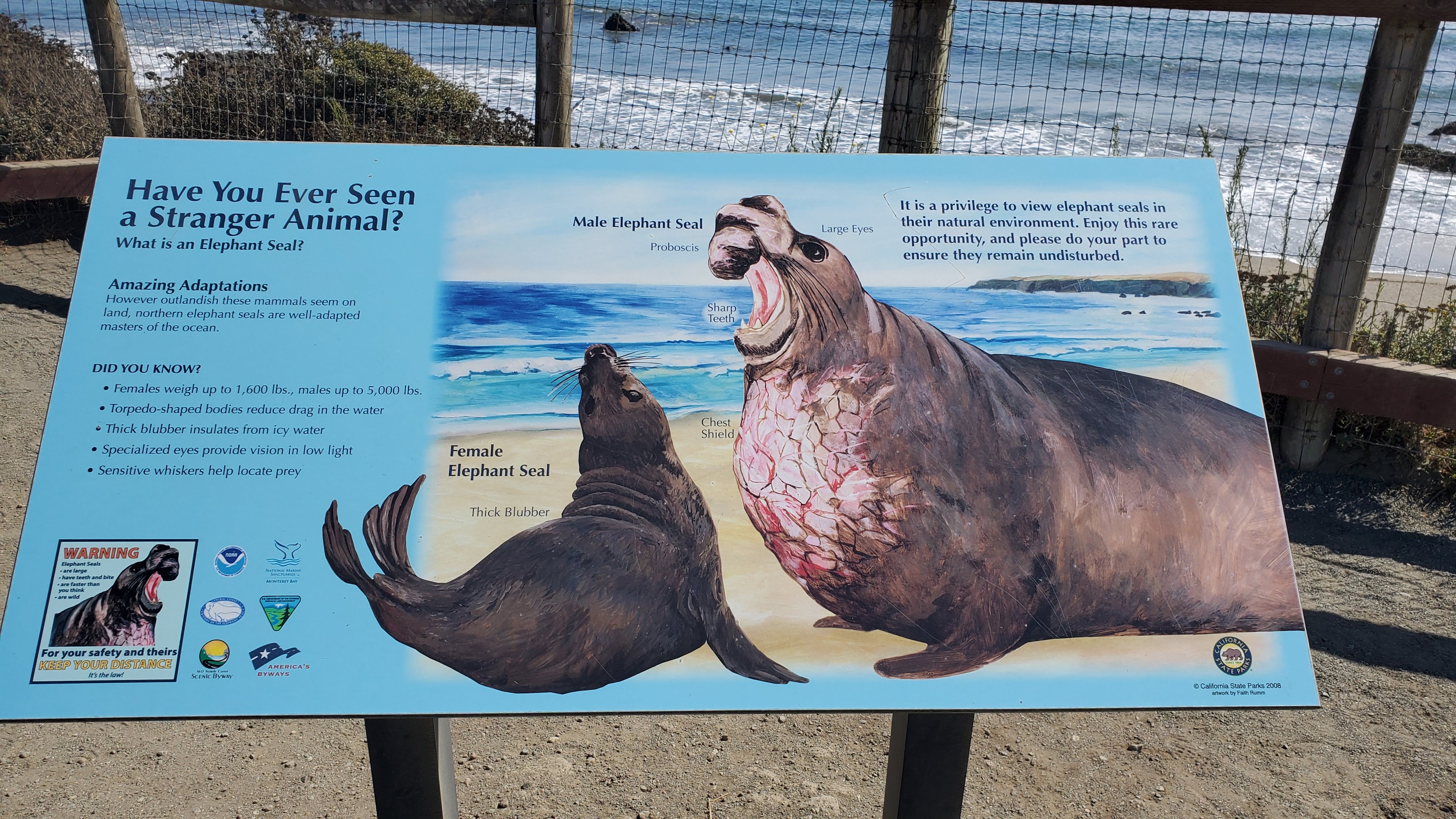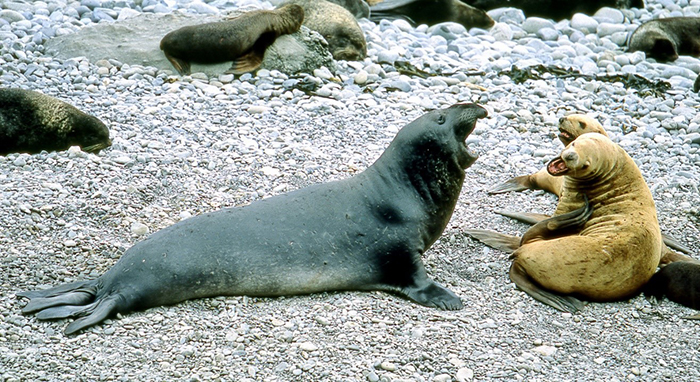Of course! If this elephant is an Elephant seals! These seals owe their name to the trunk-like nose of the males and their large size. Recently, Evgeny Mamaev, Deputy Director for Science of the CINBR, reminded us of theelephant seal arrival on the Commander Islands, according to him: "It was a long time ago. Once a Northern Elephant Seal from Oregon came to the Medny Island, and lived there for several years. He was trusting, unlike seals and sea lions, and allowed us to take photos of him. And he became the first sea elephant reliably registered in the fauna of Russia.”

Areal of the northern elephant seal
Where do these animals live in large quantities? For example, northern elephant seals fill two sandy beaches in San Luis Obispo, California. They can be seen there at different times of the year. February is the time of mating, April and May are the moulting period for females, and September-November is the time when juveniles get out to the beaches. Mainly in January we can see pups appearance there.
The beaches are part of the Piedras Blancas State Marine Reserve and Marine Conservation Area. The Piedras Blancas elephant seal rookery is the perfect place to get off the highway and watch seals from a low cape, along a well-equipped trail with viewing platforms and information boards. Thus, humans and elephant seals can be close to each other, but not case any trouble. Such an idyll appeared recently. Elephant seals were on the brink of extinction decades ago, and since the 1700s, the Northwest Pacific maritime fur trade has wiped out nearly every species of marine mammal, including sea otters, whales, dolphins, seals and sea lions. Elephant seals were hunted to near extinction for their valuable fat, which was used to make lamp oil and grease. By 1892, fewer than 100 elephant seals remained on Guadalupe Island off the coast of Baja California. By 1900, many species, including the northern elephant seal, were considered extinct.

The elephant seal can dive to a depth of 1600 m and remain submerged for up to 77 minutes. Photo by Svetlana Glinkina
In 1922, Mexico granted protected status to elephant seals, followed by the United States. Since then, the northern elephant seal population has expanded northward to islands along the California coast, including the Channel Islands, Ano Nuevo Island (north of Santa Cruz) and Farallon Island off the coast of San Francisco.
The first elephant seals were sighted on the island of Agno Nuevo in 1955, and the first pup was born there in 1961. By the spring of 1991, there were about 400 seals on the beaches south of the Piedras Blancas lighthouse. In February 1992, the first pup was born in Piedras Blancas. By 1996, the number of pups had grown to nearly 1,000, and the colony extended south and north to the beaches adjacent to Highway #1. Conflicts began to arise when beaches that were historically used by humans were quickly taken over by elephant seals. Elephant seals have become a major hobby for those traveling along Highway #1 along the Pacific coast. Thousands of people stopped, illegally parked their cars and made their way to beaches through fences to see the elephants. Hunting for unique photographs just a few meters from the resting seals, people got too close. Many approached the seals at a dangerous distance, and some even tried to provoke a reaction from the animals. Wildlife management agencies were overwhelmed by the number of interactions between seals and humans, and had no clear cut decisions. Only the interaction of various services in the state of California made it possible to resolve this problem. Since 1997, changes to the viewing platforms have made it possible to view the elephants perfectly without intruding on their lives. The promenade was built by the California Conservation Corps with support from the California Coastal Conservation Area; explanatory signs were provided by California state parks; disabled parking improved by the California Department of Transportation.

Infrastructure helped protect animals from human influence. Photo by Svetlana Glinkina
The coastal area, which includes the rookery, became state property under the control of state parks in 2006. In 2011, the relationship between the Friends of the Elephant Seals and the state parks was formalized, and Friends became a partner association of state parks, helping as volunteer guides.
During the breeding season, elephant seals usually return to the same beaches where they were born. As more pupps are born every year, the colony continues to grow. In recent years, more than 25,000 elephant seals have lived along the 8-mile stretch of coastline north and south of Piedras Blancas, and the colony continues to expand to other beaches.
Yugo-Vostochnoye rookery. Medny Island. Photo - Evgeny Mamaev.
The species continues to recover, and the story of the elephant seals offers hope. Meanwhile, on the northern coast of the same Pacific Ocean, sea lions - also seals, but eared ones - are in great need of our protection, restoration of the population. For a long time, the sea lion was one of the main objects of fishing and served as a source of not only food, but also items of clothing and everyday life of the Aleuts, and was exterminated during the period of the development of the North Pacific Ocean. Largely thanks to the sea lion, man was able to master this harsh island land - the abode of endless cyclones and storms. Despite the fact that ideal conditions for the protection of the sea lion have been created on the territory of the Commander Islands Nature Reserve and regular monitoring at the rookeries has been organized, these efforts are insufficient to preserve the species globally. The population size is strongly influenced by the conditions in the wintering grounds. Now the number of sea lion is extremely low and to preserve this species is our duty and gratitude for expanding the boundaries of human habitation.










